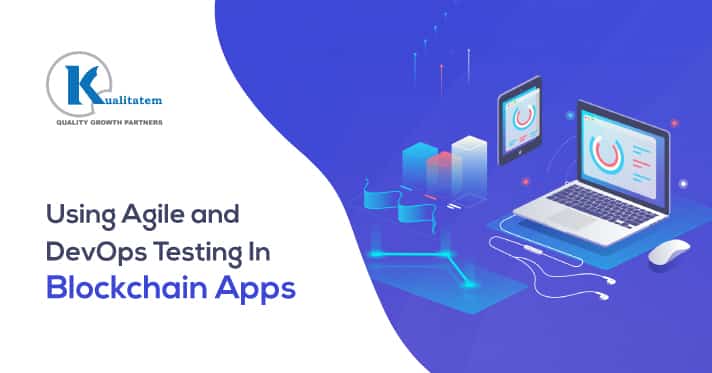Using Agile and DevOps Testing in Blockchain Apps

Keeping under consideration the difficulty that testers encounter while testing blockchain apps along with quicker deployment and integrations in the actual environment, it is significant for the QA team to comprehend the ways to evaluate and debug the blockchain app. The software testing companies perform a few “specialized testing” methods like:
1. Node or Peer Testing
A node is a device on the blockchain network that has the ability to accomplish various tasks like the store, create, receive and send data along dispersed network routes. When various nodes interact with each other, it is known as peers. Nodes interact with a network and attain more details regarding the network via their peer. The main aim of this type of testing is to maintain the integrity of shared ledgers and networks.
2. Smart Contract Testing
Smart contracts must not be confused with the legal contract of the law or court. It is a computer-generated program that inevitably executes transactions when some pre-coded and pre-defined conditions and business rules and logic are met. This code or computer program functions on top of a blockchain encompassing pre-defined rules approved by the parties of this contract.
Blockchain App Testing: DevOps and Agile Testing Tips
Agile is a technique of project management utilized for software development. In this, solution and requirements progress through a partnership between self-organizing cross-functional teams. This is considered an iterative approach for software delivery. This helps to create software incrementally from the beginning of the project and the ability to acclimatize to the changes as quick or quicker than changes can happen. Other similarities include- Agile functions by cutting down projects into smaller portions of user-functionalities, also called user stories. It is then prioritized and continuously delivered in short cycles known as iterations. You can also correlate this with the blocks being developed and assessed in the blockchain. In fact, the agile manifesto can be correlated with blockchain working in terms of decentralized, transparent secure and efficient system, and smart contracts. The 4 components of the agile manifesto encompass:
- Individuals and interactions over processes and tools
- Working software over comprehensive documentation
- Responding to change over following a plan
- Customer collaboration over contract negotiation
On the contrary, the main objective of the DevOps is to support the continuous deployment and continuous delivery procedure by restructuring the relationship between app development and testing and deployment team. This is something similar to a node that performs various tasks along with dispersed network routes. Another imperative component is DevOps in continuous testing. It is a procedure for executing automated tests as an integral part of the software delivery pipeline to attain immediate feedback related to business risks. These risks are often associated with a software release candidate. On similar lines, blockchain requires a real-time authentication because all members in the chain can view the associated details of a block immediately.
Best practices from DevOps include continuous integration testing. Whereas, best practices form Agile include testing and iterations. This can have a significant impact on the techniques via which blockchain apps are tested and deployed. One of the most popular approaches is the “Shift Left Testing” approach. Through this approach, you can shift testing to the left of the lifecycle. As a consequence, earlier tests can be completed with the option of non-stop reuse. This entire technique assists to expose defect in the early stages in the lifecycle and evade production surprises.











